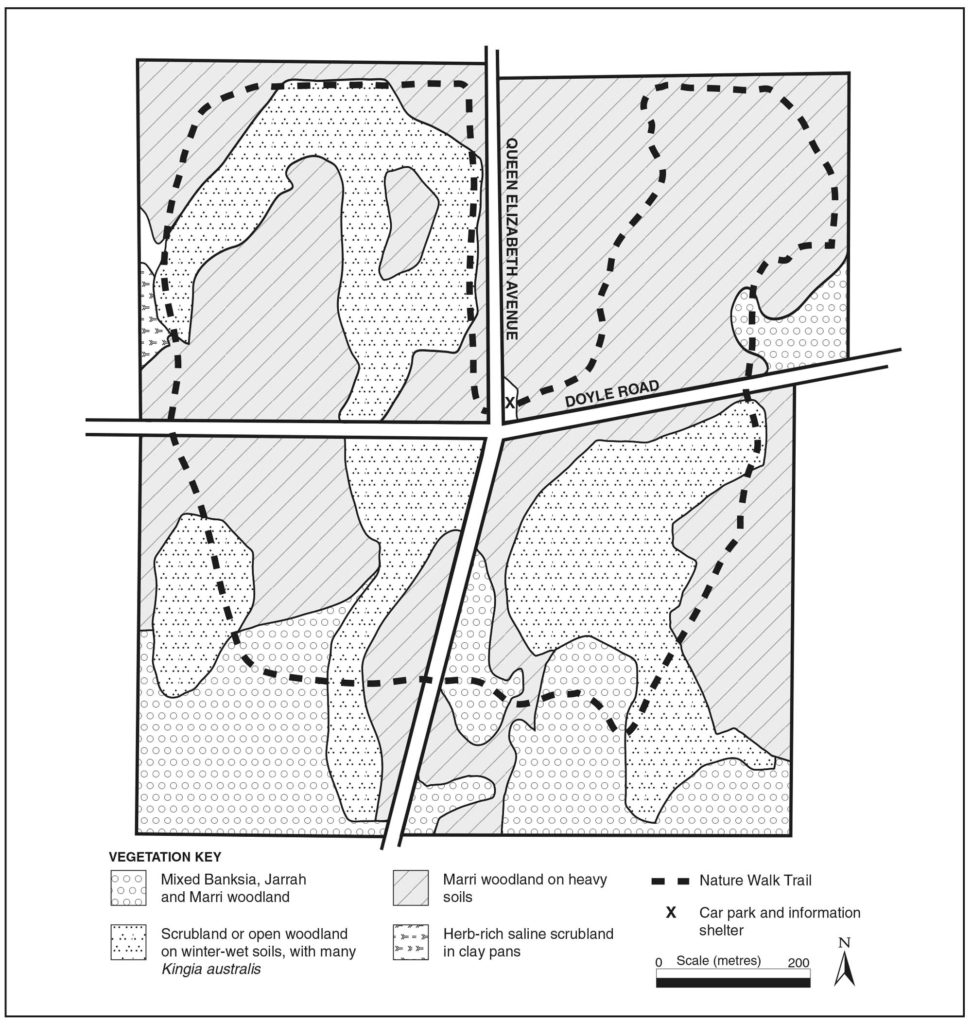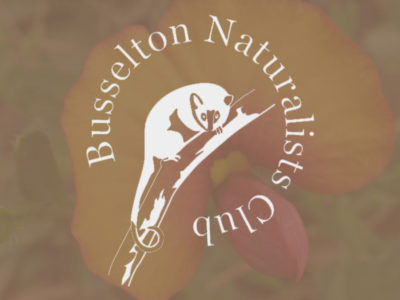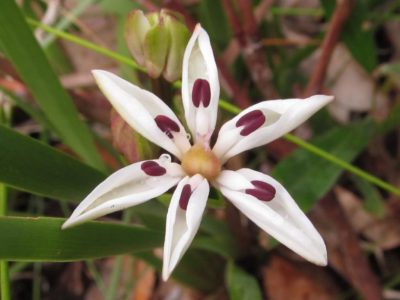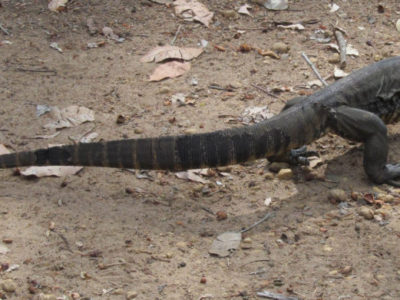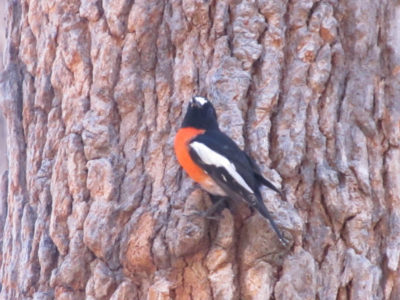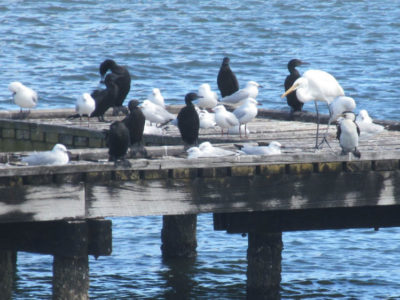Ambergate Reserve
Ambergate Reserve is a 75-hectare remnant of once widespread shrubland and woodland, now much cleared. The reserve is rich in plants and wildlife and it has important conservation values. The then Shire of Busselton appointed the Busselton Naturalists Club as manager of the reserve in 1987 to advise it on desirable management actions; to survey flora and fauna; clear rubbish, weeds, and feral animals; control fire; rehabilitate degraded areas, and to promote public use. In 2021, the Club handed back all responsibilities for reserve management to the City of Busselton after failing to reach an agreement on administrative requirements the City wished to impose on the Club.
Please be thoughtful:
- keep cars on the road to stop the spread of dieback fungus and prevent physical damage to vegetation
- leave fallen timber on the ground as shelter for animals
- avoid trampling on plants when using the walk trail
- ALWAYS use the foot bath at the information shelter to make sure your footwear does not introduce the jarrah dieback fungus into the reserve.
Schools and other community groups are encouraged to use the Ambergate Reserve for nature and associated studies. The reserve contains a wide variety of vegetation types including both natural and artificial wetland areas.
The reserve is a high quality remnant of plants and animals that were once common throughout the southern Swan Coastal Plan. It contains several rare and endangered species, including a Verticordia feather flower and the Southern Brown Bandicoot or Quenda.Mapping has shown that three threatened ecological communities make up more than 80% of the reserve.
The Ambergate area was first known as Group 44 in the Group Settlement Scheme. It was named Ambergate by the early settlers, probably after a town in Derbyshire, England. Group settlers lived in tents on the reserve in the 1920s prior to receiving their allocation of nearby land that then had to be cleared for farming.
Location
Wildlife at Ambergate
The mammals and reptiles of Ambergate can be hard to spot but traces of their activities are everywhere.
Seventy five hectares is not a large reserve in which populations can survive, so careful management is needed. See brochures of other seasons for listings of plants, birds and frogs.
Walk Trail
The walk trail commences at the information shelter in the centre of the reserve at the car park. Please walk through the foot bath before starting any section of the walk to help prevent the spread of the jarrah dieback fungus.
The walk can be started and finished at any road crossing. However, the threat posed by the dieback fungus is so severe that we repeat our request to please disinfect your footwear by walking through the foot bath in the information shelter.
Wildlife at Ambergate
The mammals and reptiles of Ambergate can be hard to spot but traces of their activities are everywhere.
Seventy five hectares is not a large reserve in which populations can survive, so careful management is needed. See brochures of other seasons for listings of plants, birds and frogs.
Marsupials
• Western Grey Kangaroo Macropus fuliginosus
• Western Bush Wallaby Macropus irma
• Quenda (Short-nosed or Southern Brown Bandicoot) lsoodon obesulus
• Common Brushtail Possum Trichosurus vulpecula
• Ringtail Possum Pseudocheirus peregrinus occidentalis
Monotreme
• Short-beaked Echidna Tachyglossus aculealus
Feral Mammals
Fox, cat, mouse, rat
Geckoes
• Marbled Gecko Phyllodactylus marmoratus
– nocturnal in eucalypt woodland.
Legless Lizards
• Aprasia Pulchella – under litter and decaying logs
Skinks
• Cryptoblepharus plagiocephalus
(Common Wall skink) – logs, trunks, litter surface.
• Clenotus atenijer – a litter skink of sandy soils
– its presence at Ambergate is 100km N of previous records.
• Leiolopisma trilineatum – amongst low shrubs of swamp margins.
• Lerista distinguenda – a long “sand-swimming” skink of woodland litter.
• Morethia lineocoellata – restricted to coastal white sands, amongst herbage of woodland.
• Tiliqua rugosa (Bobtail) – a very large skink which eats plants and slow animals such as snails.
Front-fanged Snakes
• Notechis scutatus occidentalis (Tiger Snake)
– active at night, feeding on frogs around the waterholes.
• Rhinoplocephalus nigriceps (Black-backed Snake) shelters inside rotting logs to emerge at night to feed on small lizards – venomous but not aggressive.
Birds of Ambergate
Many south west birds prepare to migrate north and east by early autumn. They need corridors of vegetation along road verges so they can cross otherwise cleared agricultural expanses to reach ‘habitat islands’ like the Ambergate Reserve.
Early autumn is a gathering time for many birds preparing to migrate. Tree Martins, Rainbow Bee-eaters and Woodswallows swarm overhead while small groups of Rufous Whistlers, Striated Pardalotes and estern Gerygones pass through. Parrots, cockatoos and honeyeaters move in for winter sources of seed and nectar. The resident bush birds must work hard for their food and form “mixed flocks” of many species to systematically work through the reserve. Families of Splendid Fairy-wrens, Yellow-rumped Thom bills and Silvereyes join with ones and twos of honeyeaters, robins and fantails.
Some waterbirds from adjoining winter-flooded fann land have been included in the following list. M = migratory or nomadic species.
Only one species can be considered an introduced or exotic bird – the Laughing Kookaburra – although the Regent Parrot and Crested Pigeon have recently moved into the south west from the wheatbelt.
Water Birds
Black Swan
Australian Shelduck
Australian Wood Duck
Pacific Black Duck
Grey Teal
Australasian Grebe
Little Black Cormorant
White-faced He ron
White-necked Heron
Great Egret
Meat Eaters
and Birds of Prey
Black-shouldered Kite
Whistling Kite
Swamp Harrier
Brown Goshawk
Collared Sparrowhawk
Wedge-tai led Eagle
Little Eagle
Brown Falcon
Australian Hobby
Peregrine Falcon
Nankeen Kestral
Laughing Kookaburra *
Seed Eaters
Stubble Quail – M
Common Bronzewing
Crested Pigeon
Red-Tailed Black Cockatoo
Long-billed (Baudin’s) Black Cockatoo – M
Purple-crowned Lorikeet – M
Regent Parrot
Western Rosella
Australian Ringneck (’28 ‘ Parrot)
Red-capped Parrot
Elegant Parrot
Large Insect Eaters
Pallid Cuckoo – M
Fan-tailed Cuckoo – M
Horsfield Bronze Cuckoo – M
Australian Owlet-nightjar
Rainbow Bee-eater – M
Black-faced Cuckoo-shrike – M
White-winged Triller – M
Australian Magpie Lark (Mudlark)
Black-faced Woodswallow
Dusky Woodswallow
Grey Butcherbird
Australian Magpie
Australian Raven
Southern Boobook
Tawny Frogmouth
Australian Pipit
Australian White Ibis
Small Insect Eaters
Tree Martin – M
Welcome Swallow
Scarlet Robin
White-breasted Robin
Golden Whistler
Rufous Whistler
Grey Fantail
Willy Wagtail
Splendid Fairy-wren
Western Gerygone – M
Inland Thornhill
Yellow-rumped Thornhill
Western Thornhill
Striated Pardalote – M
Silvereye – M
Grey Shrike-thrush
White-backed Scrubwren
Southern Emu-wren
White-fronted Chat
Banded Lapwing
Nectar Feeders
Red Wattlebird
Singing Honeyeater
White-naped Honeyeater
Brown Honeyeater
New Holland Honeyeater
White-cheeked Honeyeater
Western Spinebill

